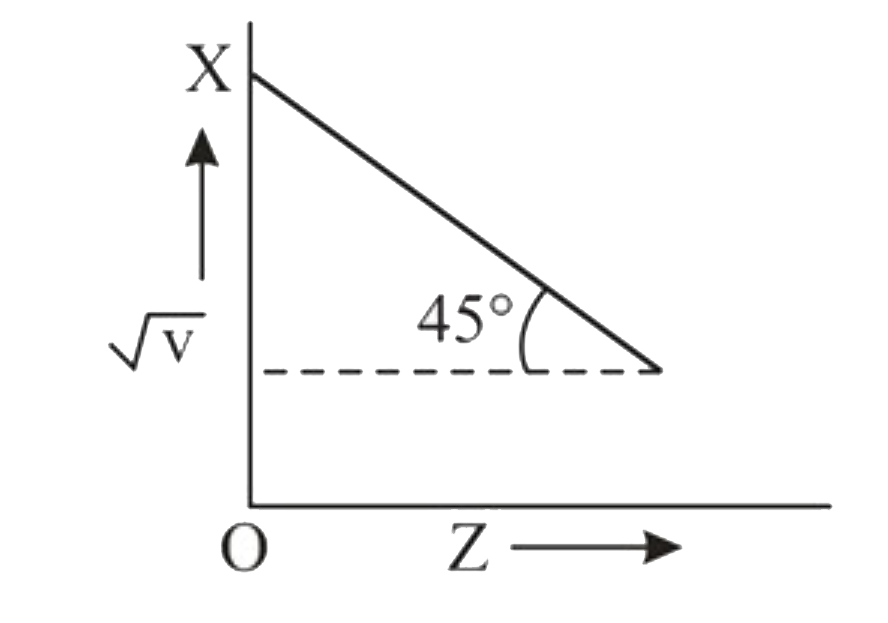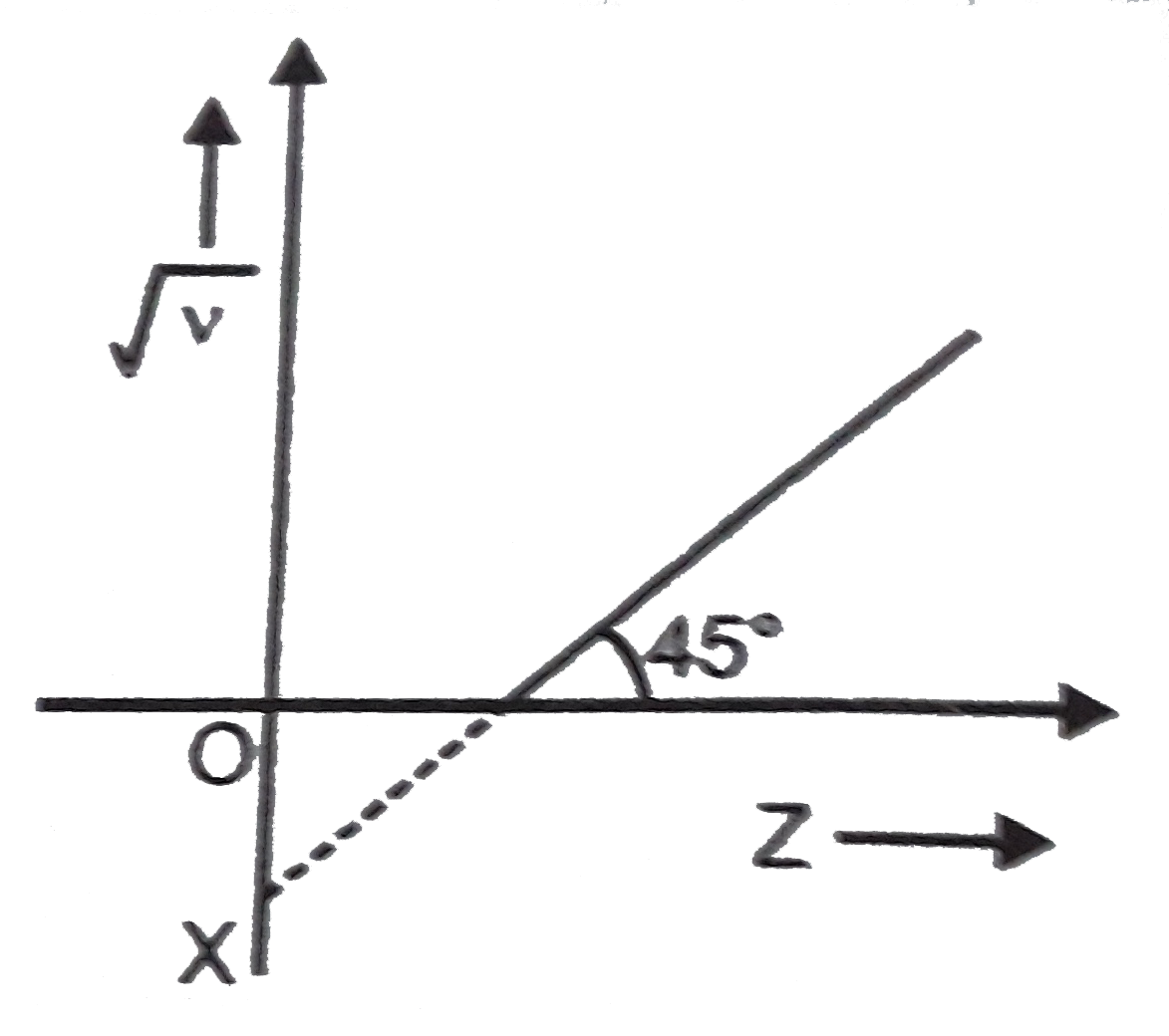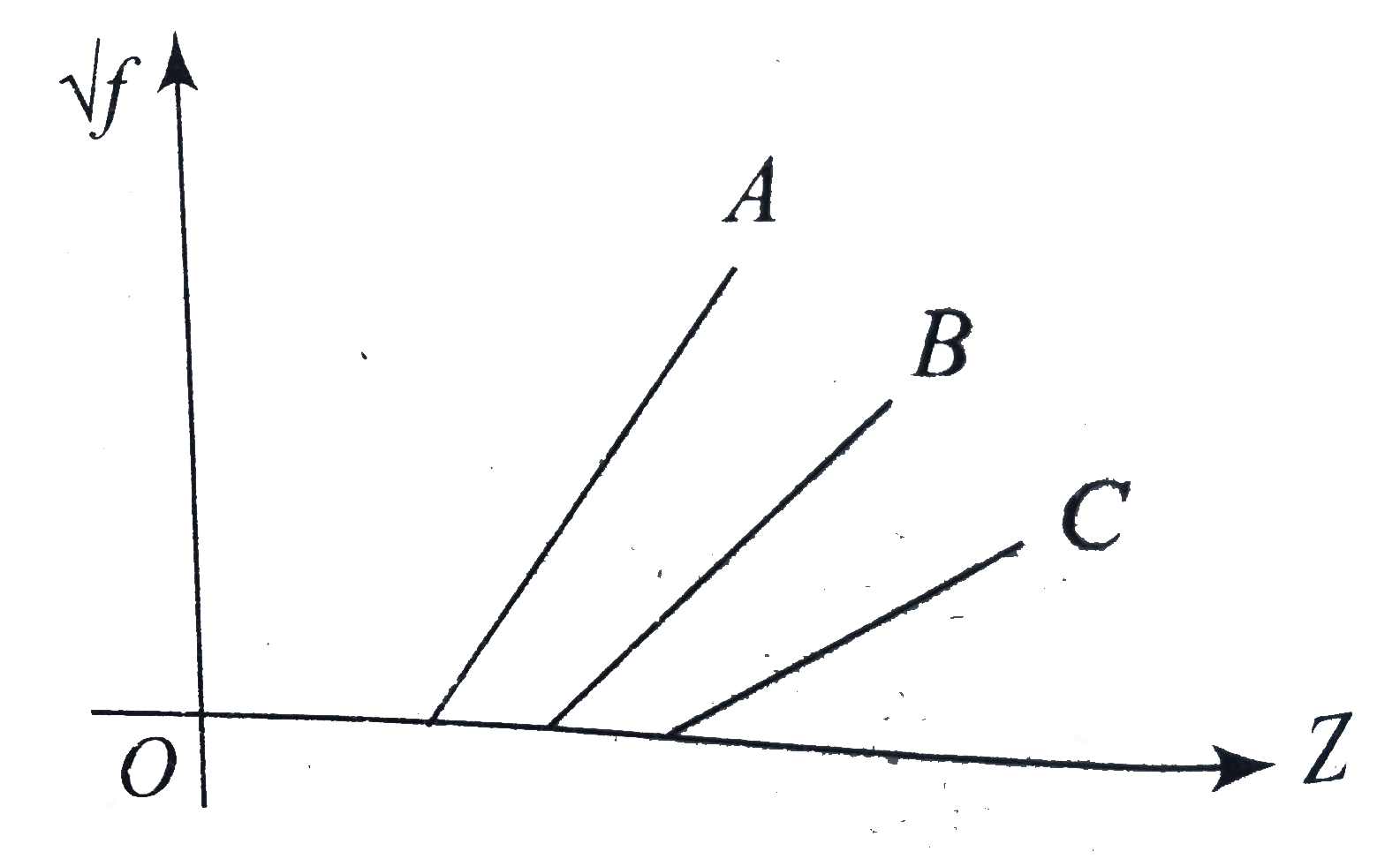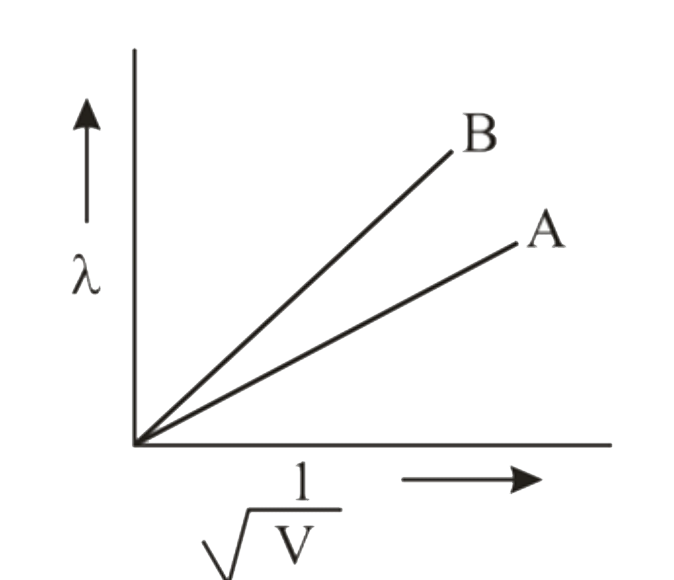In the graph between √vandZ for the Mosley's equation, √v=a(Z−b), the Mosley's equation, √v=a(Z−b), the intercept OX is 1 on √v axis.

What is the frequency v when the atomic number Z is 52?
7.14s−1
7s−1
2401s−1
2601s−1
The correct Answer is:D
Step by step video & image solution for In the graph between sqrtv and Z for the Mosley's equation, sqrtv=a(Z-b), the Mosley's equation, sqrtv=a(Z-b), the intercept OX is 1 on sqrtv axis. What is the frequency v when the atomic number Z is 52? by Chemistry experts to help you in doubts & scoring excellent marks in Class 12 exams.
Updated on:21/07/2023Similar Questions
In the graph between √v and Z for the Mosley's equation √v=a(Z-b), the intercept OX is -1 on √v axis.

What is the frequency when atomic number (Z) is 51?
View SolutionIn Mosley's equation , √v=a(Z−b) which was derived from the observations made during the bombardment of the metal target with X - rays
View Solution
Knowledge Check
2z+ 1 =z
What value of z satisfies the equation above?A−2B−1C12D1
If for a graph plotted between frequency of deflected X-ray beam and atomic number of the target metal (√vandZ) gives a straight line with slope and intercept both as unity, then what will be the atomic number of the target metal if the observed frequency of X-rays is 2401 sec−1?
View SolutionFigure shown Moseley's plot between √f and Z where f is the frequency and Z is the atomic number. Three lines A, B, and C always in the graph may repersent

View SolutionFind the equation of the plane which is parallel to x-axis and cuts intercepts 2 and 5 on y and z-axis respectively.
View SolutionThe equations to the straight line through (a,b,c) parallel to the z-axis are
View SolutionThe graph that correctly represents the relation of frequency v of a particular characteristic X - ray with the atomic number Z of the material is
View SolutionIf the system of equation (,x−2y+z=a),(2x+y−2z=b),and,(x+3y−3z=c)
have at least one solution, then the relationalship between a,b,c is
View Solutionde Broglie wavelengths of two particles A and B are plotted against (1√V) , where V is the potential on the particles. Which of the following relation is correct about the mass of the particles ?

View Solution
